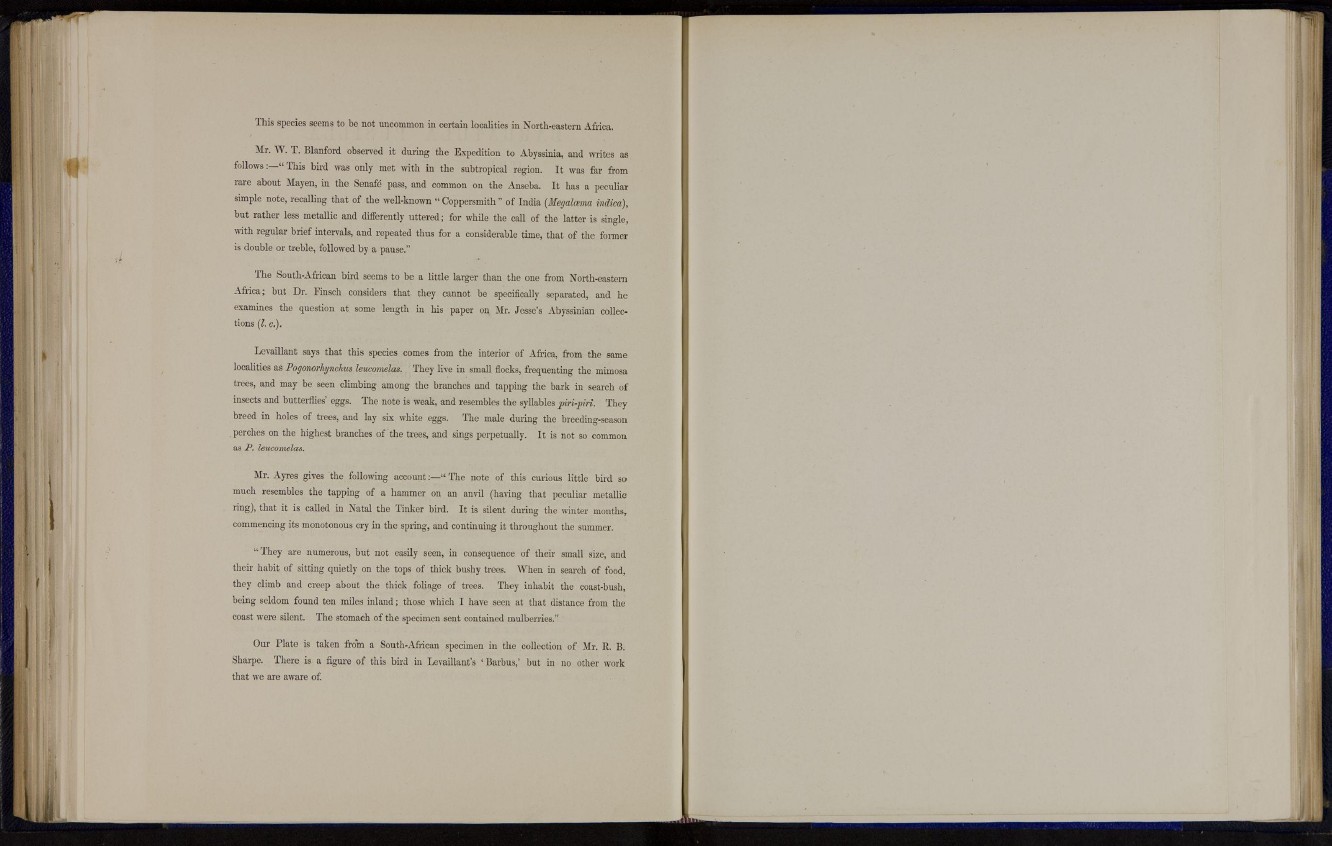
This species seems to be not uncommon in certain localities in North-eastern Afrii
Mr. W. T. Blanford observed it during the Expedition to Abyssinia, and writes as
follows:—" This bird was only met with in the subtropical region. It was far from
rare about May en, in the Senafe pass, and common on the Anseba. It has a peculiar
simple note, recalling that of the well-known " Coppersmith " of India (Megalcema indica),
but rather less metallic and differently uttered; for while the call of the latter is single,
with regular brief intervals, and repeated thus for a considerable time, that of the former
is double or treble, followed by a pause."
The South-African bird seems to be a little larger than the one from North-eastern
Africa; but Dr. Finsch considers that they cannot be specifically separated, and he
examines the question at some length in his paper on Mr. Jesse's Abyssinian collections
(I. c).
Levaillant says that this species comes from the interior of Africa, from the same
localities as Pogonorhynchus leucomelas. They live in small flocks, frequenting the mimosa
trees, and may be seen climbing among the branches and tapping the bark in search of
insects and butterflies' eggs. The note is weak, and resembles the syllables piri-piri. They
breed in holes of trees, and lay six white eggs. The male during the breeding-season
perches on t h e highest branches of the trees, and sings perpetually. It is not so common
as P. leucomelas.
Mr. Ayres gives the following account:—" The note of this curious little bird so
much resembles the tapping of a hammer on an anvil (having that peculiar metallic
ring), that it is called in Natal the Tinker bird. It is silent during the winter months,
commencing its monotonous cry in the spring, and continuing it throughout the summer.
"They are numerous, but not easily seen, in consequence of their small size, and
their habit of sitting quietly on the tops of thick bushy trees. When in search of food,
they climb and creep about the thick foliage of trees. They inhabit the coast-bush,
being seldom found ten miles inland; those which 1 have seen at that distance from the
coast were silent. The stomach of the specimen sent contained mulberries."
Our Plate is taken from a South-African specimen in the collection of Mr. 11. B.
Sharpe. There is a figure of this bird in Levaillant's ' Barbus,' but in no other work
that wc are aware of.